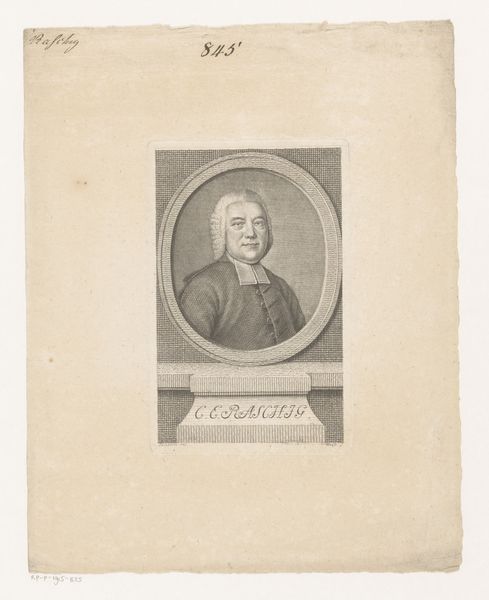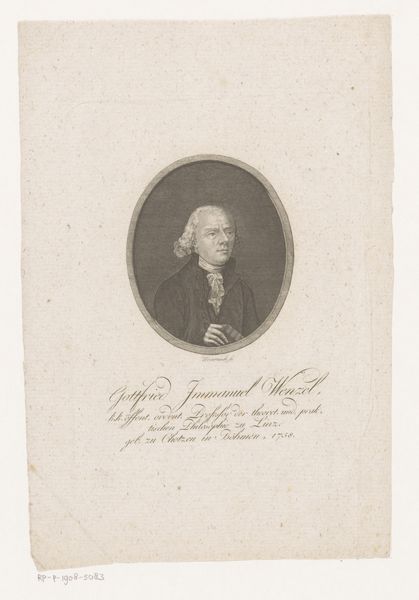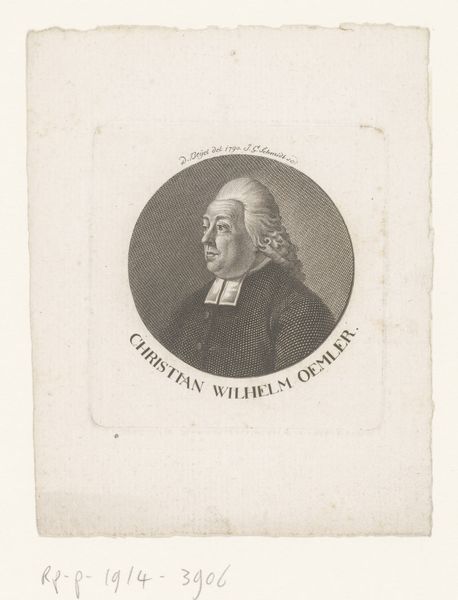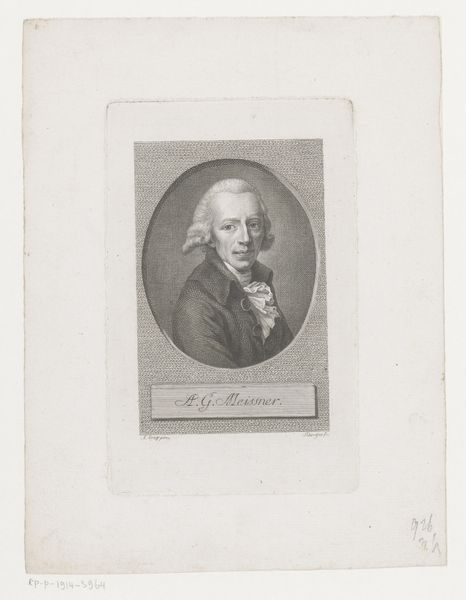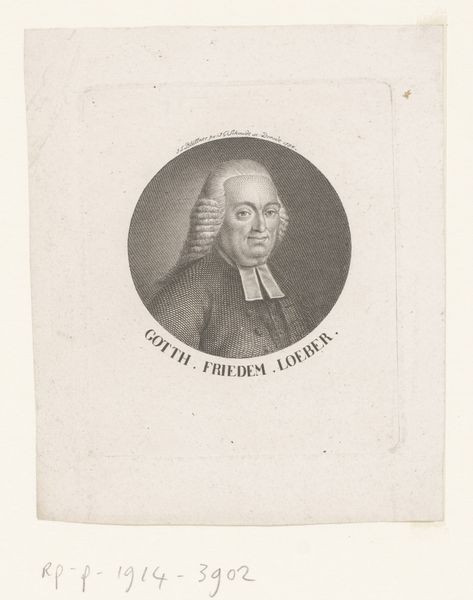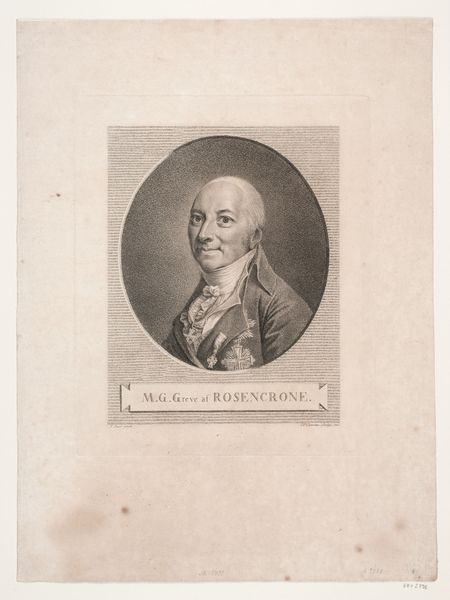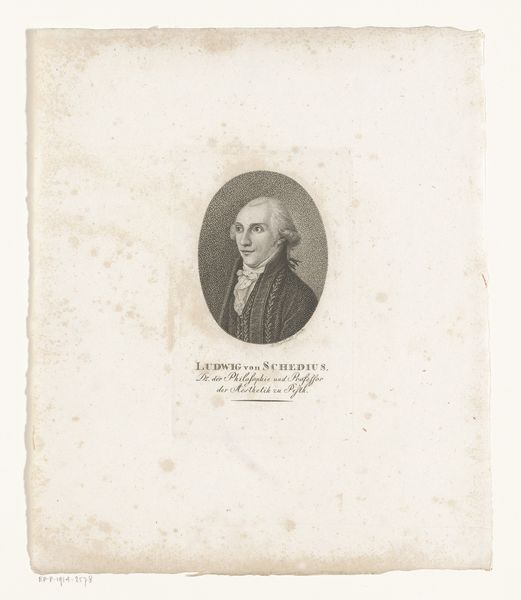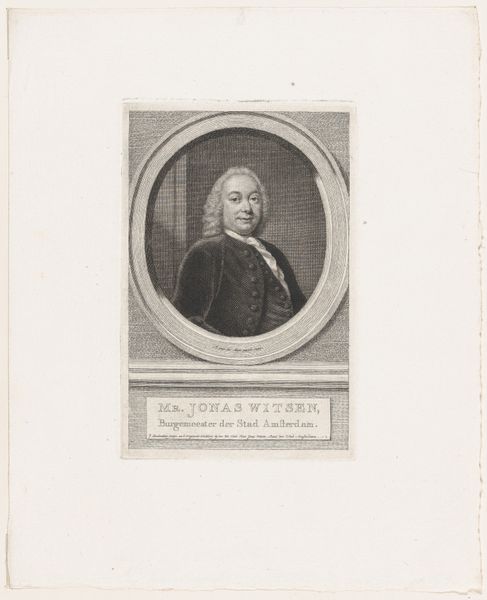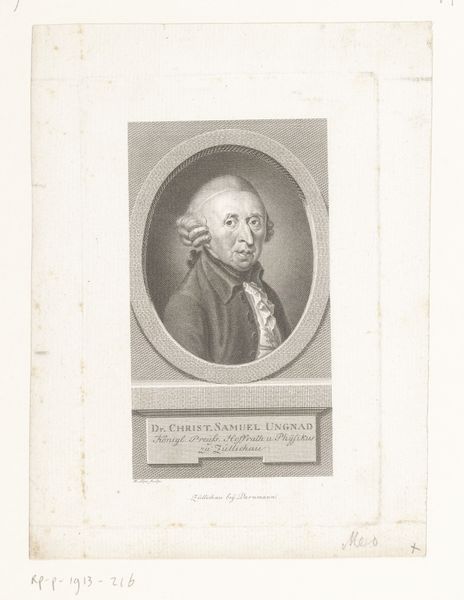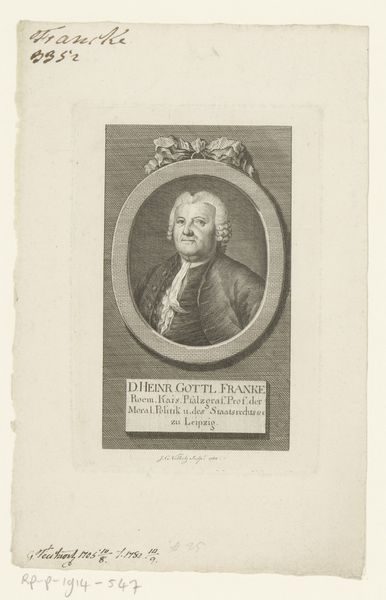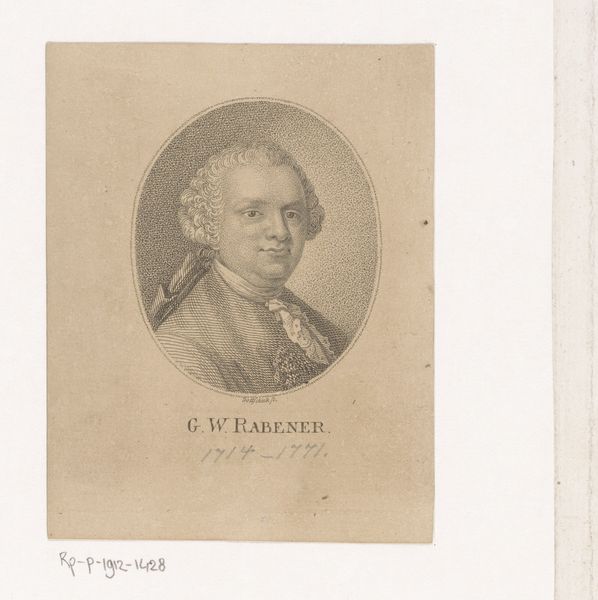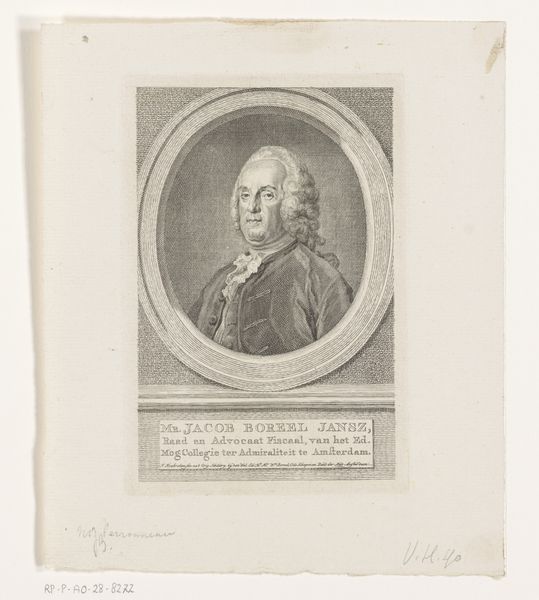
print, engraving
#
portrait
#
neoclacissism
# print
#
old engraving style
#
pencil drawing
#
history-painting
#
engraving
Dimensions: height 80 mm, width 74 mm
Copyright: Rijks Museum: Open Domain
Curator: This is "Portret van Johann Theodor Kunneth," an engraving executed in 1791 by Paul Wolfgang Schwarz. The portrait is striking in its neoclassical restraint. What's your immediate reaction to it? Editor: I'm struck by its somber feel, despite the subject's formal attire. The gray ink conveys a certain sobriety; almost feels like a historical document rather than just a portrait. Curator: Indeed. Consider the implications of creating a print, specifically an engraving, at this moment in history. It allowed for wider dissemination of Kunneth’s image, suggesting his societal importance within a very specific framework. Think about the access to such a portrait, how it solidifies power dynamics of the time. Editor: Absolutely. And engravings themselves, the meticulous labor involved. Each line etched into the metal plate, then pressed onto paper – it’s a testament to craftsmanship. I'm interested in where the paper comes from, and the quality of the ink; each component speaks to broader socio-economic contexts. Curator: It’s fascinating to consider the visual language at play. Neoclassicism, with its emphasis on order and rationality, serves as the perfect aesthetic vehicle for representing the Enlightenment ideals prevalent among the elite. How do these ideas intersect with social justice and hierarchy of class in the late 18th century? Editor: The print, with its replicable nature, inherently challenges unique art status. What were the conditions of making it accessible to the masses? Also, I am curious to consider the role of women workers within printing sphere. It is also printed matter used within patriarchal structures; and whose faces aren't given same privilege of portrayal. Curator: These kinds of portrait engravings cemented figures like Kunneth in public memory but also reinforced established social and political power structures that privileged some at the exclusion of other voices. This artwork reminds us to examine both who is portrayed and who remains unseen. Editor: Definitely. Exploring the raw materials that went into creating this image helps us contextualize its worth as object but pushes toward the labor, the tools and structures shaping art. Curator: Thinking about Schwarz’s engraving and its legacy helps us think about power, representation, and the enduring relevance of questioning the stories art tells. Editor: Agreed, engaging in this type of close viewing shows the material reality and invites us to confront art making processes alongside the human story.
Comments
No comments
Be the first to comment and join the conversation on the ultimate creative platform.
